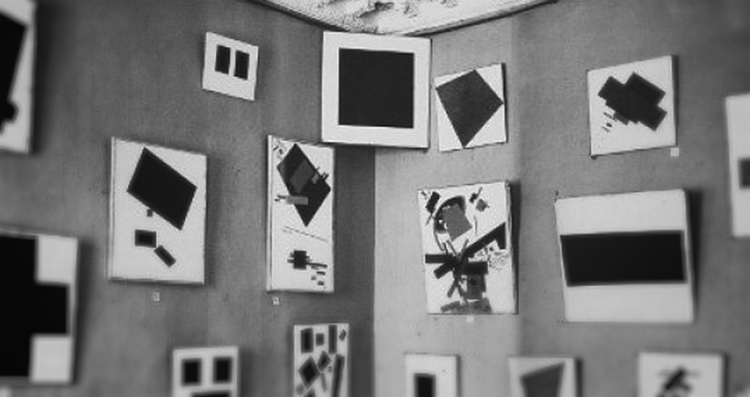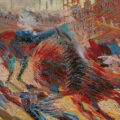“When Black Square was first exhibited, the world was in chaos. It was the middle of the First World War and there was continuing unrest following the 1905 Russian revolution that in 1917 would explode into the Bolshevik uprising and October Revolution. The Black Square arrived at a time when Russian art crowds, although used to seeing cubist and futurist works, would never have seen a work like this. The artistic revolution Malevich was bringing about seems to reflect the social revolution that was happening. Malevich didn’t intend for the Black Square to be a representation of a real thing, but a symbol of a dawning new age.”
—5 ways to look at Malevich’s Black Square
“Malevich gave his ‘new art’ a name, suprematism, announcing a few years later that ‘To the Suprematist the visual phenomena of the objective world are, in themselves, meaningless; the significant thing is feeling’ … True to these principles, Black Square is radically non-representational. The slab of black paint that dominates the canvas works as grand refusal, repudiating nature in favour of abstraction. As such, the painting may be read in terms of the Kantian theory of the sublime … Malevich himself regarded his minimalistic geometrical forms as the secular equivalents of Russian icons, a form of painting which aspires to present the divine as pure or unmediated reality.”
—Philip Shaw
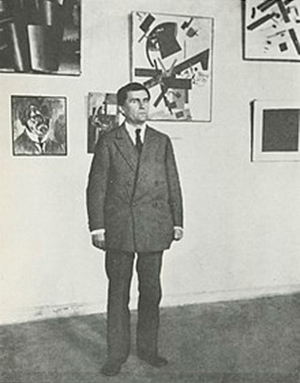
I think Kazimir Malevich (23 February 1879–15 May 1935) is worth the praise he’s received. He has actually changed how I see art today.
Not only was the suprematism movement supposed to be the very last stage of art – its final evolution – the original exhibition itself was iconic, literally (seen up top). Putting a painting in the “red corner” reserved for religious icons was scandalous back then.
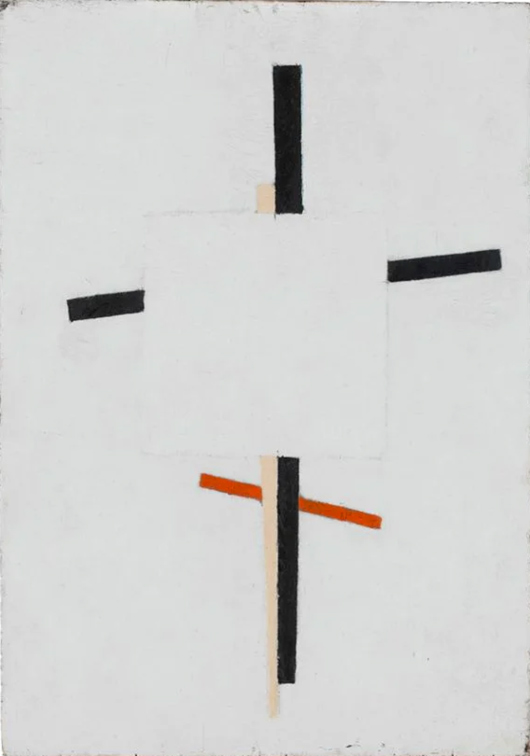

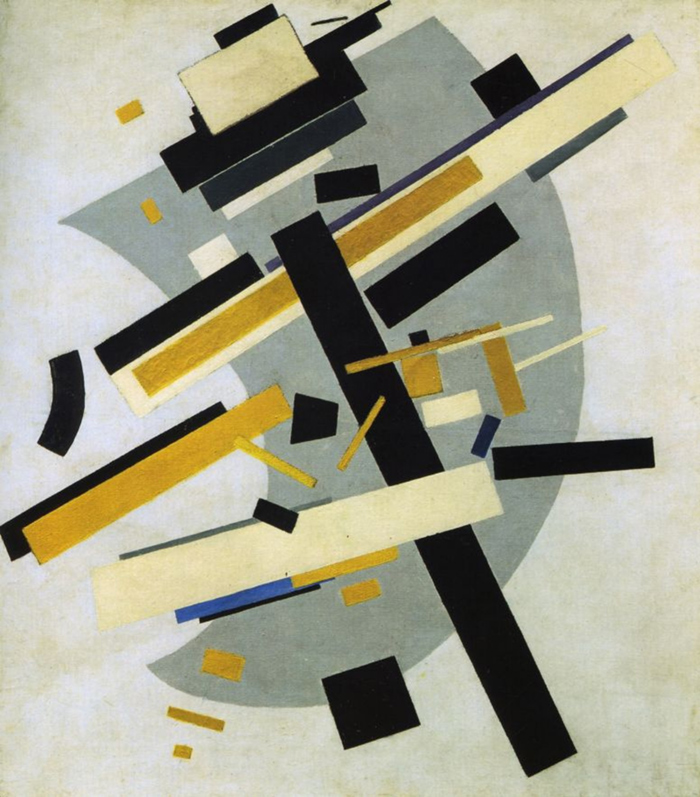
I think Malevich’s ideas are a great example of social change.
Which is the whole point. Everyone knows what the image is, everybody can recognize a square, basic shapes —
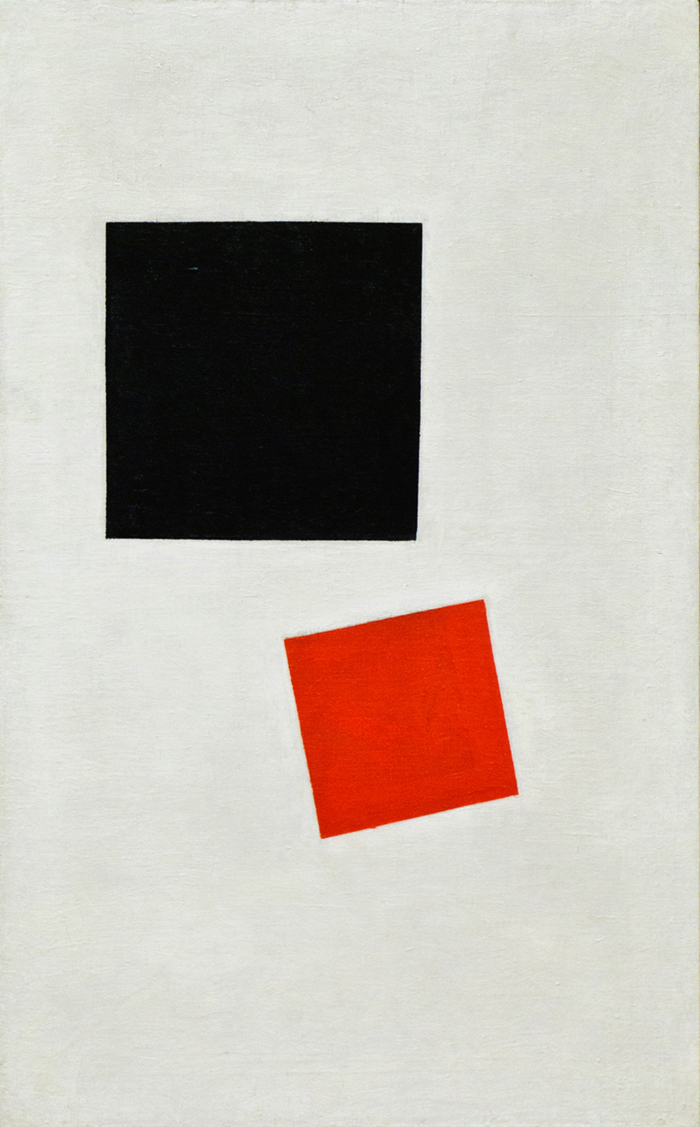
are they in motion or not?
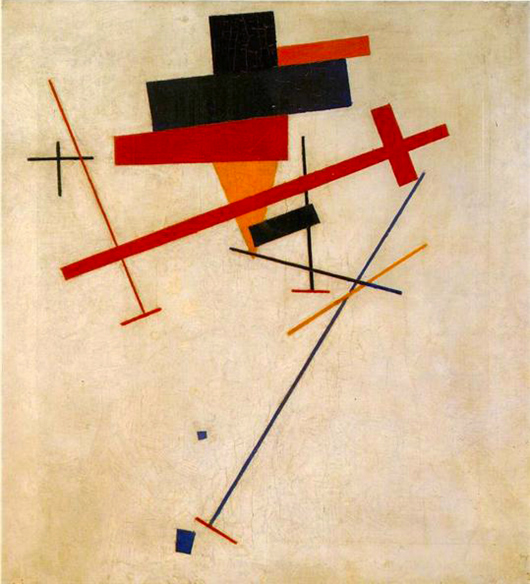
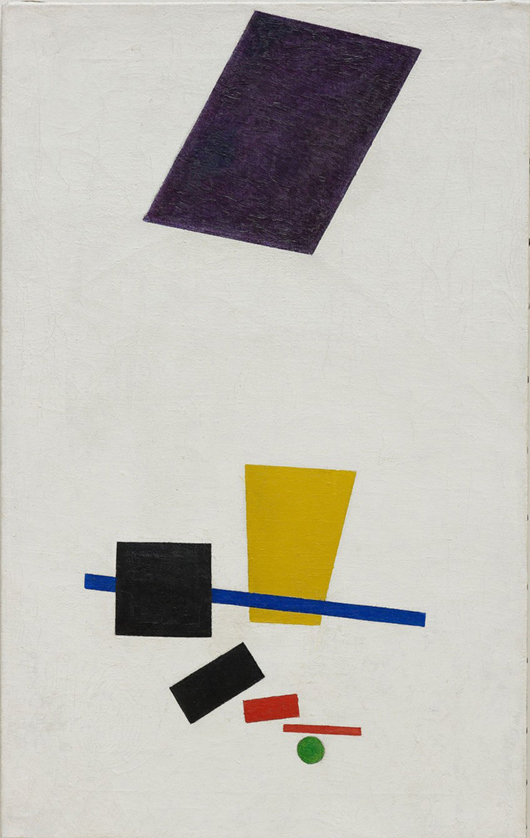
His point was to create a “universal” and equally accessible art for everyone with or without education.

How it changed me: I became smarter.
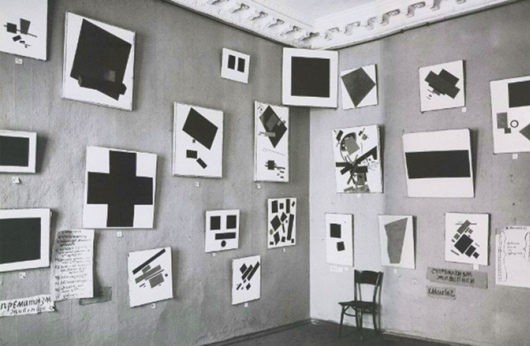
—purplesfinx
Flommist Veronika Vezirova, a.k.a. Purplesfinx, is an illustrator and graphic designer based in Barcelona. Inspired by culture of all kinds, she writes on topics that include art history, creativity and folklore. Her other works include manga and psychedelic poetry. Copyright © 2024 Veronika Vezirova.
PLEASE SUPPORT FLOMM
TIPS + DONATIONS DISCREETLY ACCEPTED






